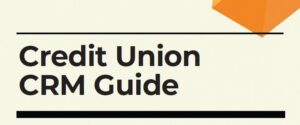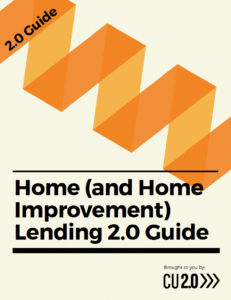With mounting consumer debt, rising delinquencies, and a slowing economy, credit union members are about to feel a pinch. And, while being money-wise won’t help as much as a bigger paycheck, it can make a lifelong difference for many.
Credit unions are the institutional embodiment of community financial wellness. But are they doing enough to provide it?
In this blog, we’ll look into how paperwork is helping to make the credit union mission a reality.
People Helping People (with Money)
Credit unions look out for their members and the communities they live in. It’s part of the “people helping people” mentality that distinguishes credit unions from for-profit competitors.
But today, good loan terms, interest, rewards, etc. may not be enough. Recently, CUNA agreed, saying that “financial wellbeing for all” is the new definition of credit union philosophy. This couldn’t come at a better time, as high inflation and a recession are causing financial struggles:
- The percentage of people considered Financially Healthy decreased from 34% in 2021 to 31% in 2022 (Financial Health Network)
- More than 77% of respondents in a recent survey reported feeling anxious about their finances.
- About 60% of consumers earn less now than they did before the pandemic.
The numbers point in a clear direction. What members need now are the tools and resources to get back on stable footing and achieve financial stability.
Credit Unions as Financial Wellness Providers
Financial wellness—or financial wellbeing—is a state of financial security in which one has enough money available for bills, expenses, debts, and emergencies. Generally, it also implies some ability to build for the future.
Historically, most credit unions have promoted financial wellness by making educational resources available to their members. This is useful if the end goal is simply financial education and literacy.
For example, some people simply don’t know how to budget, or what compound interest is, or which products set themselves up for financial success. Financial education and literacy improve people’s knowledge about financial terms and practices so they can make better decisions for themselves.
However, financial institutions can and should do more. Surveys show that members now look to their credit union to improve their financial health.
Credit unions can meet this demand with personalization, which is made possible with technology (such as data, automation, etc.). With personal, contextual guidance, financial tools and utilities can influence behaviors and encourage action. Gamification, push notifications, and collaboration features can also drive action and keep members on course.
Because simply knowing a financial term doesn’t guarantee the best outcome, tools and utilities focused on reinforcing action and engagement are key to ensuring that members achieve financial wellbeing.
Introducing Paperwork
Paperwork is a financial wellness platform that supports the financial wellbeing of credit union members at every stage of their financial journey. This is achieved through a white-label mobile app that, although comprehensive, is easy to use and integrates seamlessly into a member’s everyday life. From daily money management to savings, insurance, and legacy planning all the way through to retirement, members are given step-by-step, personalized guidance on how to achieve financial stability for themselves and their families.
Paperwork’s guidance is augmented with behavioral stimuli, like its financial health score, as well as support systems (such as a digital vault and collaboration features) that make it easy for members to take action towards improving their overall financial situation.
Meanwhile, Paperwork delivers relevant and customizable credit union offers in the right place at the right time, helping members fulfill their needs while increasing credit union sales across banking, lending, investment, and insurance products. This approach keeps credit union products top of mind when members make product choices, improving their position against competing fintech and embedded solutions.
Paperwork also helps credit union’s advance their digital strategy with insightful data and analytics about members so credit unions can better serve them.
And, thanks to API connectivity, it’s ready to plug into your CRM, CXM, and other data tools and sources.
Paperwork goes beyond merely providing educational resources to members—it provides actionable, personalized guidance that promotes adoption of the credit union’s own products, making it a very solid new entrant into the world of credit union financial wellness.
Additional Resources
Like what you’ve seen so far?
Sign up for our Fintech Call Program and get a personalized, 30-minute call each quarter. We’ll discuss the latest technologies and solutions, make key introductions, and offer early access to events, giveaways, and more! And of course, please subscribe to our blog (if you haven’t already)!




